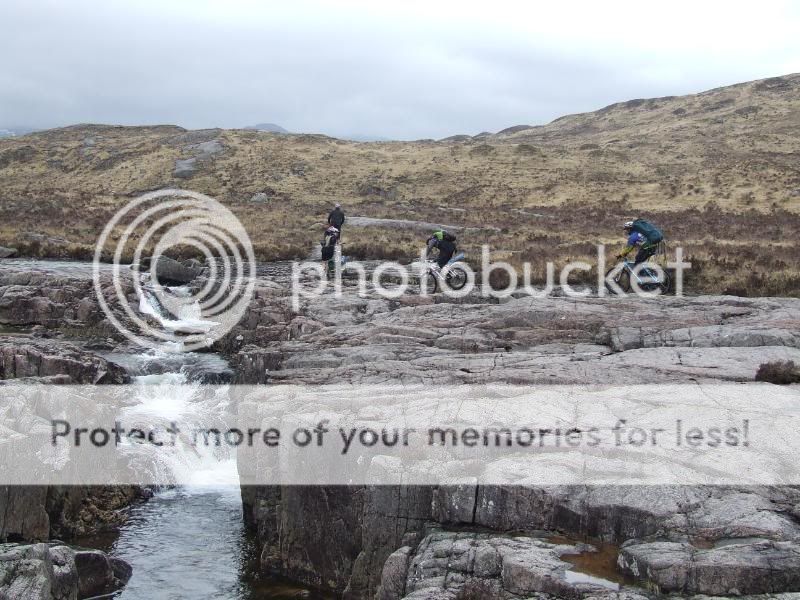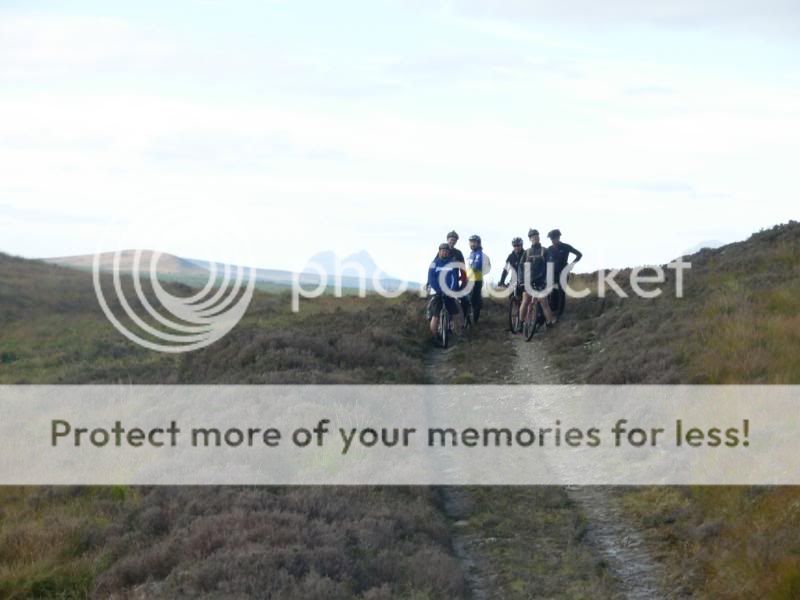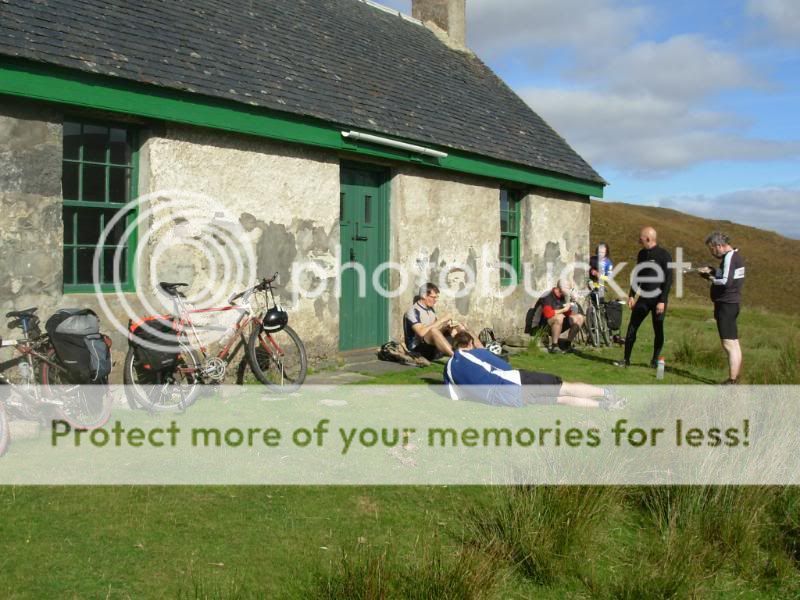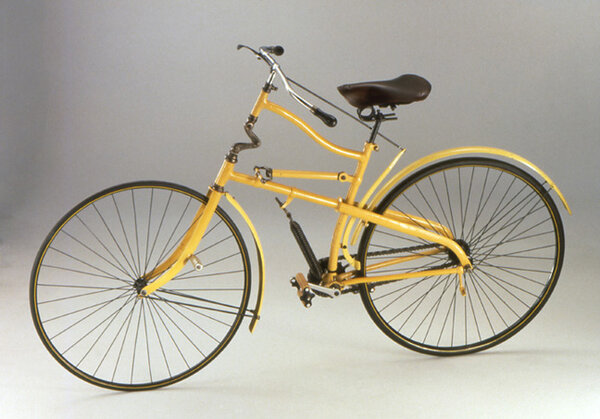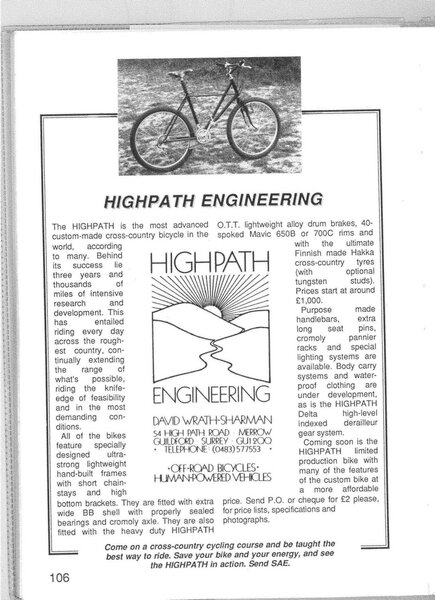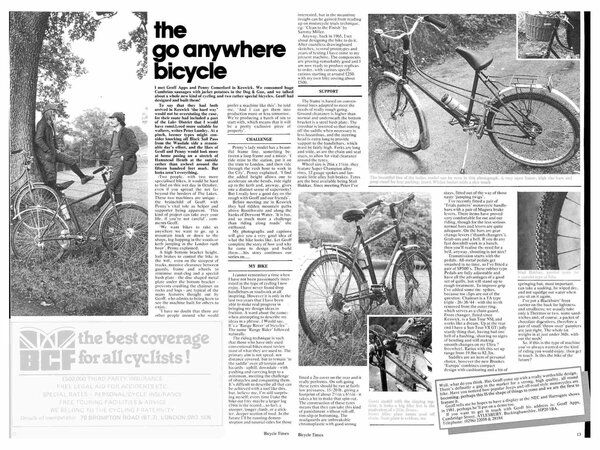You are using an out of date browser. It may not display this or other websites correctly.
You should upgrade or use an alternative browser.
You should upgrade or use an alternative browser.
Anecdotes from the pre-history of British mountain biking
- Thread starter GrahamJohnWallace
- Start date
- Feedback
- View
Mr Panda":f3hqflzz said:MacRetro - April 2010. Blackmount, Southern Highlands
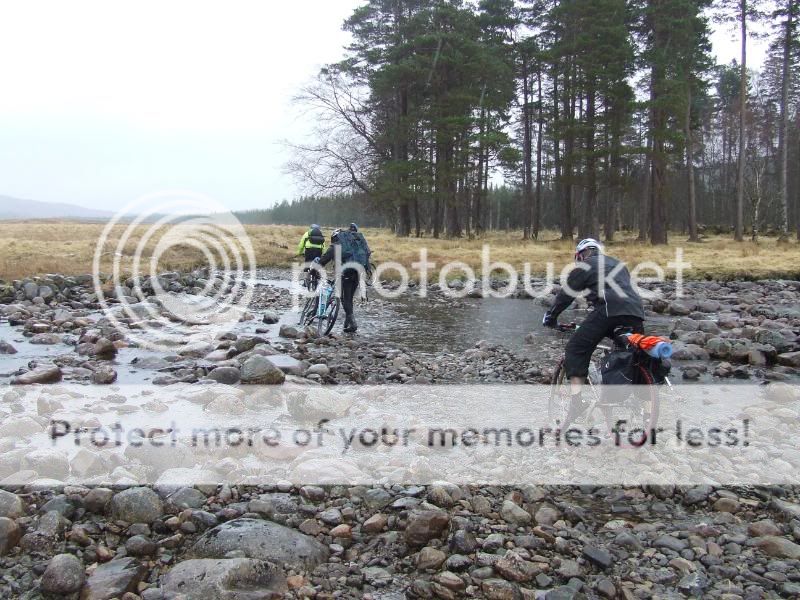
I bet that you could easily ride that crossing with the use of big, low pressure tyres, (sub 15PSI), and equally wide inner-tubes, .
- Feedback
- View
Whippet' safety bicycle.
Designed by C. M. Linley; made by Messrs. Linley and Biggs, 29 Clerkenwell Road, London. Date about 1888. Weight 43.5 lbs. Purchased in Hadlow, Kent.
This machine embodied the most practical and successful spring-frame ever designed, its great feature being that the relative positions of the saddle, pedals, and handlebar, did not vary, these three points being built up on a rigid triangle, separated from the main frame by a strong coil spring and a movable shackle in the steering mechanism. Thus it was impossible for road shocks, from either wheel, to reach the rider.
On a machine of this type, with cushion tyres, M. A. Holbein beat the 24 hours' road record in 1890, covering 336.5 miles, and beating T. A. Edge who used pneumatics. William Chater-Lea won the Catford open Hill Climb in 1888, 1889, 1891, on 'Whippet' bicycles, at Westerham, Titsey, and Waller Hills respectively.
In the two earlier climbs he rode a spring-frame machine, but in the 1891 event he used a rigid framed 'Whippet.' Chater-Lee acquired his cycle-engineering knowledge as a pupil of C. M. Linley, being employed at the Whippet Works. A letter from C. M. Linley is attached to the exhibit: while claiming that his 'Whippet' spring-frame was a practical and commercial success (a claim which he is entirely justified in making) Linley proceeds:—
“In 1888 the pneumatic tyre appeared, and I recognized that the death knell of the 'Whippet spring-frame had been sounded. The air tyre, by intercepting road shocks before they reached even the rim of the wheel, was a more efficient anti-vibrator device than any contrivance relying on springs in the frame of the cycle itself."
Note the extension on front and rear forks, drilled to carry the mudguard stays, a detail which has been acclaimed as “a modern improvement" 35 years after Linley first used it.
Note also that the toggle joints in steering mechanism have ball-bearings.
Designed by C. M. Linley; made by Messrs. Linley and Biggs, 29 Clerkenwell Road, London. Date about 1888. Weight 43.5 lbs. Purchased in Hadlow, Kent.
This machine embodied the most practical and successful spring-frame ever designed, its great feature being that the relative positions of the saddle, pedals, and handlebar, did not vary, these three points being built up on a rigid triangle, separated from the main frame by a strong coil spring and a movable shackle in the steering mechanism. Thus it was impossible for road shocks, from either wheel, to reach the rider.
On a machine of this type, with cushion tyres, M. A. Holbein beat the 24 hours' road record in 1890, covering 336.5 miles, and beating T. A. Edge who used pneumatics. William Chater-Lea won the Catford open Hill Climb in 1888, 1889, 1891, on 'Whippet' bicycles, at Westerham, Titsey, and Waller Hills respectively.
In the two earlier climbs he rode a spring-frame machine, but in the 1891 event he used a rigid framed 'Whippet.' Chater-Lee acquired his cycle-engineering knowledge as a pupil of C. M. Linley, being employed at the Whippet Works. A letter from C. M. Linley is attached to the exhibit: while claiming that his 'Whippet' spring-frame was a practical and commercial success (a claim which he is entirely justified in making) Linley proceeds:—
“In 1888 the pneumatic tyre appeared, and I recognized that the death knell of the 'Whippet spring-frame had been sounded. The air tyre, by intercepting road shocks before they reached even the rim of the wheel, was a more efficient anti-vibrator device than any contrivance relying on springs in the frame of the cycle itself."
Note the extension on front and rear forks, drilled to carry the mudguard stays, a detail which has been acclaimed as “a modern improvement" 35 years after Linley first used it.
Note also that the toggle joints in steering mechanism have ball-bearings.
Attachments
FairfaxPat
Senior Retro Guru
I could easily ride that stream crossing on my modern 5 inch travel full susser, too. Modern tires and suspension can do all those things and more, without resorting to extremely low pressure tires ( 25 pounds in mine when the going is rough) or short wheelbase upright designs like the old Clelands and Highpaths. Really, modern stuff is so much better now in that regard. This isn't to say those bikes aren't good, it's just that lots of bikes will do those things these days.
Paul Eggleton
Retro Guru
Absolutely fascinating stuff guys 
thanks
thanks
I recently picked up a copy 'The Off Road Bicycle Book in a second hand bookshop. Published 1987. Author Iain Lynn, Technical Editor David Wrath-Sharman. In the back of the book is an advert for Highpath Engineering and the 'The CROSS COUNTRY Cycling Club'
Attachments
- Feedback
- View
I am a donut.
MMMmmmmm Donuts....
MMMmmmmm Donuts....
Pat, I think I did ride a bit of that section but it was too slippy, this was at the join of 3 rivers so it wasn't a straight forward cross to dry land, the next section got too deep to pedal. Suspension would help a bit but it was really slippy even with modernish tyres on... and you didn't want to slip into this...
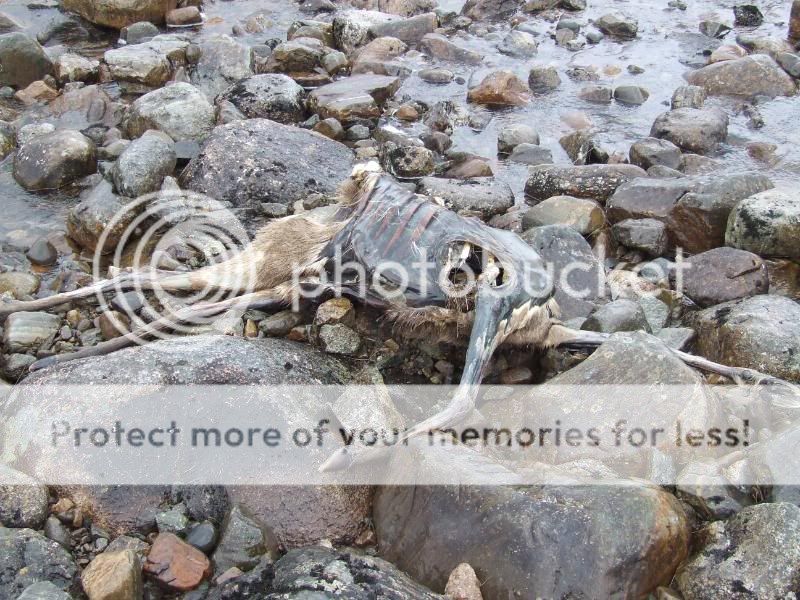
Both of these runs were 2 day jaunts, about 35 miles a day with gear. On that second trip we met a group of full sussers going the other way - they took just over an hour less than us riding rigid. We took about 6 1/2 hours and that was mainly my fault.
Now back on topic...
Graeme, I love that full susser, never seen that before - nothing is as new as you think is it.
I like the look of the highpath in that mag too a bit different and more trials like than the others I have seen, what year is it?

Both of these runs were 2 day jaunts, about 35 miles a day with gear. On that second trip we met a group of full sussers going the other way - they took just over an hour less than us riding rigid. We took about 6 1/2 hours and that was mainly my fault.
Now back on topic...
Graeme, I love that full susser, never seen that before - nothing is as new as you think is it.
I like the look of the highpath in that mag too a bit different and more trials like than the others I have seen, what year is it?
- Feedback
- View
Pat":2wds5ycw said:Graeme, I love that full susser, never seen that before - nothing is as new as you think is it.
I like the look of the highpath in that mag too a bit different and more trials like than the others I have seen, what year is it?
The Whippet is even more impressive than it looks in that the suspension system locks together the movement of the front and rear wheels. The effect of this is to virtually eliminate most suspension' squat dive and lift during acceleration, hill climbing and braking. Muddy fox had a similar interconnected suspension system on their top of the range, 1990's "Interactive" model.
http://www.retrobike.co.uk/forum/viewto ... 89c7a6493d
In many ways the Whippet's system is simpler and more elegant than that used on the Muddy Fox's.
Highpaths with frames like this first appeared in 1986. They were known as Highlights, though the first I recall was called the Speedlight. It was fitted with wide drop bars, 650b wheels and intended for racing.
PS. For slippy, algae and moss coated surfaces, I recommend tyres with tungsten carbide studs intended for use on ice. Schwalbe make a version where the studs only contact the ground when you drop the tyre pressure. This way you don't have to put up with high rolling resistance and sound similar to that of a deep fat fryer when you ride on tarmac.
- Feedback
- View
Re: Anecdotes from the pre-history of British mountain bikin
Geoff has always said that his first custom framed, Cleland style bikes were made in 1979 and the above first hand account is good evidence as to the validity of this claim. However the earliest dated published evidence that these bikes existed was an article published by Nicholas Crane, referring to a Geoff Apps' Range Rider being ridden up Snowdon, "In the "closing days of 1981".
That is until Geoff recently showed this article from the Bicycle-Times of 1979. It clearly shown two fully functioning Range Riders, using Roy Davies built frames. The date of the photos and interview is given as October 1979.
How long had either of these bikes been in existence? How close does the existence of these bikes coincide with the creation of Breezer No1, the first custom made mountain bike in the US which was reputedly made in October 1977. I do not doubt that the Breezer was the first to appear! But these Apps' machines were not chronologically, very far behind at all.
Zog":217d8eo9 said:Graham Wallace, I read your thread with interest, as this brings back many memories.....I worked at DOA (DeesCycles of Amersham) at this time (1978/9) for the company run along side the cycle shop( Signwell Ltd)... Roy Davies was my boss....Geoff was a customer at this time. Roy, with a little help from myself did build his first frame , always refered to as a cross country bike, not a mountainbike.We had to fabricate bash guards and many other strange fittings and I think we assembled the finished frame into a bike Geoff could ride home.
Geoff always used to ride to the shop....cross country of course!....dressed in his rather natty clothing and deerstalker hat....
Geoff has always said that his first custom framed, Cleland style bikes were made in 1979 and the above first hand account is good evidence as to the validity of this claim. However the earliest dated published evidence that these bikes existed was an article published by Nicholas Crane, referring to a Geoff Apps' Range Rider being ridden up Snowdon, "In the "closing days of 1981".
That is until Geoff recently showed this article from the Bicycle-Times of 1979. It clearly shown two fully functioning Range Riders, using Roy Davies built frames. The date of the photos and interview is given as October 1979.
How long had either of these bikes been in existence? How close does the existence of these bikes coincide with the creation of Breezer No1, the first custom made mountain bike in the US which was reputedly made in October 1977. I do not doubt that the Breezer was the first to appear! But these Apps' machines were not chronologically, very far behind at all.
Attachments
Similar threads
- Replies
- 1
- Views
- 698
- Replies
- 19
- Views
- 2K
- Replies
- 2
- Views
- 202
